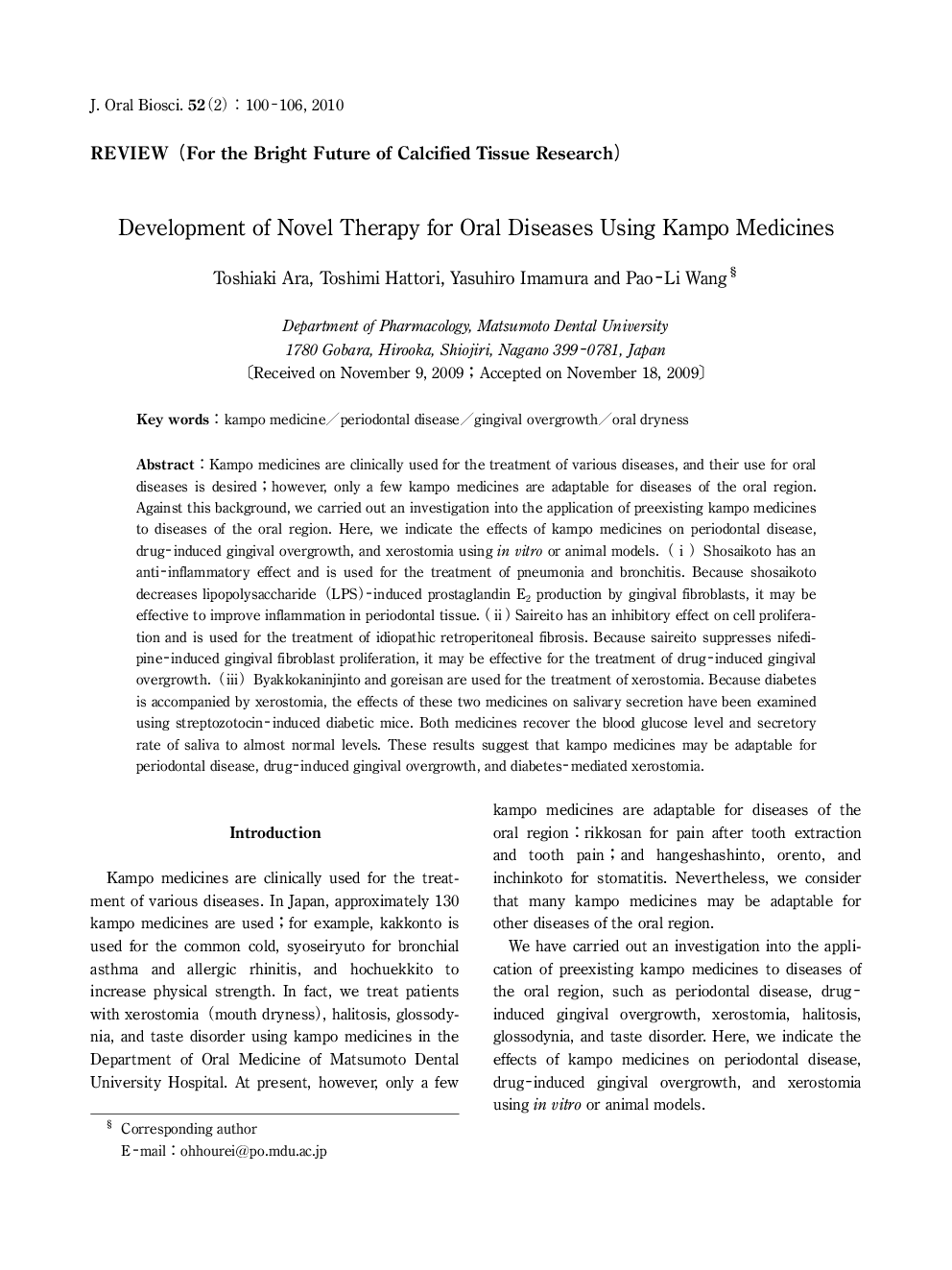| Article ID | Journal | Published Year | Pages | File Type |
|---|---|---|---|---|
| 2776973 | Journal of Oral Biosciences | 2010 | 7 Pages |
Kampo medicines are clinically used for the treatment of various diseases, and their use for oral diseases is desired; however, only a few kampo medicines are adaptable for diseases of the oral region. Against this background, we carried out an investigation into the application of preexisting kampo medicines to diseases of the oral region. Here, we indicate the effects of kampo medicines on periodontal disease, drug-induced gingival overgrowth, and xerostomia using in vitro or animal models. (i) Shosaikoto has an anti-inflammatory effect and is used for the treatment of pneumonia and bronchitis. Because shosaikoto decreases lipopolysaccharide (LPS)-induced prostaglandin E2 production by gingival fibroblasts, it may be effective to improve inflammation in periodontal tissue. (ii) Saireito has an inhibitory effect on cell proliferation and is used for the treatment of idiopathic retroperitoneal fibrosis. Because saireito suppresses nifedipine-induced gingival fibroblast proliferation, it may be effective for the treatment of drug-induced gingival overgrowth. (iii) Byakkokaninjinto and goreisan are used for the treatment of xerostomia. Because diabetes is accompanied by xerostomia, the effects of these two medicines on salivary secretion have been examined using streptozotocin-induced diabetic mice. Both medicines recover the blood glucose level and secretory rate of saliva to almost normal levels. These results suggest that kampo medicines may be adaptable for periodontal disease, drug-induced gingival overgrowth, and diabetes-mediated xerostomia.
